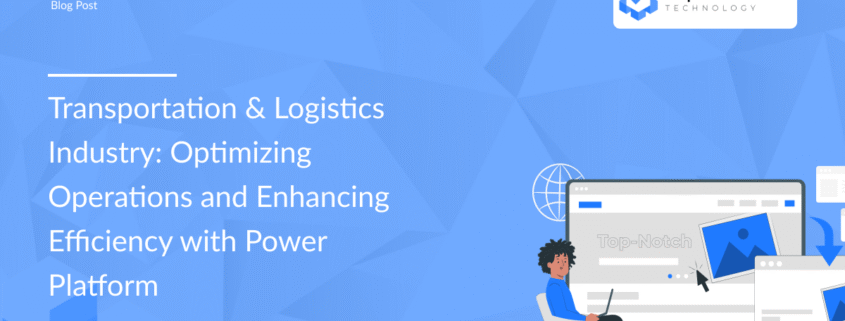Transportation & Logistics Industry: Optimizing Operations and Enhancing Efficiency with Power Platform
Introduction: The transportation and logistics industry is crucial for global trade and commerce. However, with increasing demands for faster delivery, optimized routes, and cost-efficient operations, companies must leverage technology to stay competitive. Microsoft Power Platform provides the tools to automate workflows, analyze real-time data, and enhance operational efficiencies across transportation networks, logistics chains, and customer service.
Challenges in Transportation & Logistics:
- Route Optimization: Finding the best routes while considering factors like weather, road conditions, and delivery schedules can be challenging.
- Inventory and Warehouse Management: Managing inventory, tracking shipments, and ensuring timely delivery while minimizing waste and errors is essential for success.
- Fleet Management: Fleet management involves keeping track of vehicles, maintenance schedules, fuel consumption, and overall performance.
- Customer Expectations: With the rise of e-commerce, customers demand faster, more reliable deliveries, as well as transparency in tracking shipments.
How Power Platform Helps in Transportation & Logistics:
- Power Apps: Power Apps can help transportation companies build custom apps for managing fleet operations, tracking deliveries, and communicating with drivers. These apps can integrate with GPS systems to provide real-time data about fleet locations, maintenance schedules, and delivery status.
- Power Automate: Power Automate can be used to automate repetitive tasks such as updating inventory records, sending shipment tracking notifications, and automating delivery schedules. For example, once a delivery is completed, Power Automate can trigger an automated notification to the customer, update the inventory system, and schedule the next shipment.
- Power BI: Power BI can help logistics companies analyze delivery data, fleet performance, and route efficiency. Visual dashboards can highlight key performance indicators (KPIs) like delivery times, fuel consumption, and maintenance schedules, helping decision-makers optimize operations and reduce costs.
- Power Virtual Agents: Virtual agents can be used for customer service, handling queries related to order status, delivery times, and inventory availability. This helps reduce the workload on customer service teams and improve response times.
Case Study: A transportation company used Power Platform to improve fleet management and reduce maintenance costs. By using Power Automate to track maintenance schedules and Power BI to analyze fuel efficiency, they reduced fleet downtime by 20% and improved route planning, resulting in a 15% cost reduction.
Discover more on how Power Platform can transform logistics operations.
